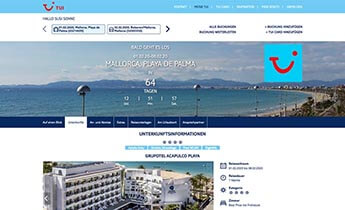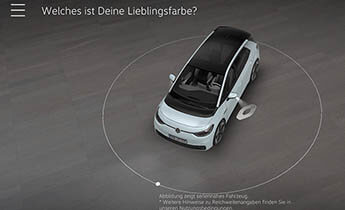Case Study Siemens Healthineers

UX Design Siemens Healthineers
User-centered development of an AI-supported radiology software assistant- Participatory design with radiologists
- User research in clinics and doctors' offices
- Design thinking workshops
- Concept, rough and detailed design
- Usability testing

As one of the world's leading medical technology companies, Siemens Healthineers is constantly working on innovative software solutions for radiological purposes.
Artificial Intelligence (AI) and smart algorithms allow for an entirely new approach to accessing information in the diagnostic workflow of radiologists.
Artificial intelligence in radiology
The goal of the project, which lasted several years, was to develop an intelligent software assistant for radiologists. Initially, the potential problems that such an assistant might solve were deliberately not specified. The project questions were:
- Which are the radiologists’ major pain points during their diagnostic work and which solutions provide most added value?
- How can an intelligent AI-supported software assistant help solve these problems?
- What should such a software assistant look like and how should it behave in order to easily blend into the day-to-day of radiologists?
Phase 1: Understand (user research)
The first project phase answered the following questions:
- What does the radiologists' diagnostic process look like today?
- Which are the biggest day-to-day challenges?
- Which kind of software assistance provides the greatest benefit for radiologists?
- How open are radiologists to innovative AI technologies?
We conducted contextual inquiries with radiologists in clinics and doctors’ offices and summarized our findings in personas and journey maps. In a user research session at a medical conference, we asked further radiologists to prioritize different pain points. The question was: ‘Which is currently the biggest challenge in the diagnostic routine that we might be able to overcome with an assistant? The understanding phase resulted in a validated journey map with all essential diagnostic steps as well as a list of prioritized pain points.


Phase 2: Explore (paper prototyping)
The exploration phase is about generating ideas: For this purpose, we conducted design thinking workshops and followed a user-centered approach. For all workshops, we used one of two possibilities:
- At least one radiologist attended the workshop and participated in the generation and evaluation of ideas.
- Immediately the day after the workshop, our UX professionals took the paper prototypes to a clinic to gather feedback from radiologists.
The result of the exploration stage was a prioritized list based on the following questions: Which ideas and solutions seem to create a high added value? Where do the radiologists see the greatest potential?
Phase 3: Draft (UX design)
In phase 3, our UX designers were responsible for the user interface design of the so-called vision prototype. Interactive wireframes that visualized basic interaction principles were developed using Axure RP. The wireframes were created using realistic sample content because, in order to receive valid feedback from users, it is crucial to show consistent and realistic patient stories without placeholder texts, even in early prototypes.

In addition to a horizontal prototype that illustrated the overall story using a click path, our UX designers also developed the detailed design for its implementation. We developed the vision prototype iteratively based on the Siemens Healthineers design system. This way, the visual design not only met users’ needs but also brand requirements. A corporate style guide served as a guideline for the icon and screen design. All new UI patterns we designed were integrated into the corporate style guide.

Phase 4: Functional implementation
For innovative products and technologies such as an AI-supported radiology assistant, creating a convincing UX design concept is not enough: the technical implementation needs to be ensured and evaluated as well. Therefore, we closely collaborated with the Fraunhofer Institute for Digital Medicine MEVIS, which developed functional prototypes alongside the UX design - with real medical data and ready-to-run algorithms.
The design concept was developed collaboratively in an iterative process. On the one hand, our designs served as a template, and on the other hand, we optimized the interactions and design of the functional prototypes from a UX perspective. This ensured that the user interface design and user experience met the needs of the radiologists and that the design concept was technologically feasible. Both the functional prototype and the Axure prototype with focus on UI and UX were evaluated at the University Hospital Essen during the doctors' day-to-day.
Phase 5: Testing (UX testing)
In regular usability tests, our user researchers thoroughly tested various interim results and prototypes of the intelligent assistant, both in university clinics and in private doctors' offices.
In addition to the classic usability test - remotely and at the radiologists' workplace - we used various survey methods. Among others, we created a diary study for the first functional prototype. Some radiologists are already using parts of the software assistant on a regular basis and can provide straightforward feedback based on various questions about their last use, such as: Which aspects are already working well in clinical practice? Which ones are still causing problems? Based on these self-assessments, we conducted further moderated interviews to understand reasons why: ‘Why does this aspect pose a problem for you while interacting with the intelligent assistant?’ The results were then incorporated into the next design step.


Project status
The collaboration of Siemens Healthineers, Fraunhofer MEVIS, the University Hospital Essen, and usability.de is ongoing. The main focus shifted from the general acceptance of AI algorithms in diagnostics to more diverse questions which users and Siemens Healthineers consider relevant for the future.

 TUI Germany: User-Centered Design
TUI Germany: User-Centered Design  Siemens Healthineers: Customer Journey
Siemens Healthineers: Customer Journey  Volkswagen: Augmented Reality App
Volkswagen: Augmented Reality App